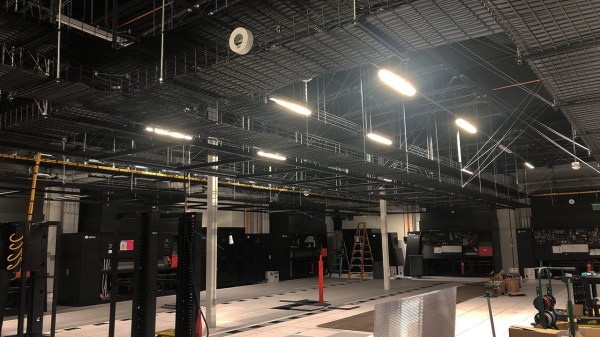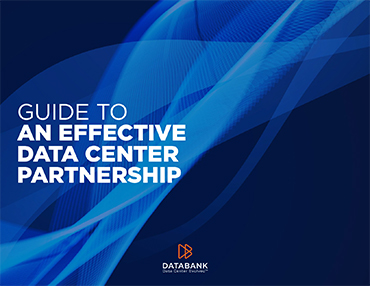Irvine is famous for its video games industry but the city has a whole lot more to offer both economically and culturally. This makes it a prime candidate as a location for a data center. With this in mind, here is a quick guide to what you can expect from an Irvine data center.
The development of data centers
The first modern data centers were created in the 1940s. At that time, they were used to house very complex and sensitive hardware. During the 1950s through the 1960s, they developed into what are now known as on-premises data centers. These are facilities that enable organizations to house and manage their own private IT infrastructure.
In the early 2000s, cloud computing began to move into the mainstream. This led to the development and growth of cloud data centers. These off-premises solutions function very differently from traditional on-premises facilities. This means they offer a whole new set of benefits and challenges.
Types of data centers
Data centers come in four main types.
Enterprise data centers: These are situated on-premises and are tailored to individual organizations, offering customized solutions for their IT infrastructure requirements.
Colocation data centers: These provide shared facilities where businesses rent space within an off-premises physical facility, maintaining control over their computing components.
Managed services data centers: These operate under a third-party management model. They provide a leasing structure that eliminates the need for organizations to invest in equipment and infrastructure.
Cloud data centers: These offer Infrastructure as a Service (IaaS). This allows organizations to access computing resources either by contracted agreement or on-demand.
It’s increasingly common for organizations to combine different types of data centers to create the best fit for their needs. For example, an enterprise might use an enterprise data center for its core needs. It might add a colocation data center to cope with predictable increases in demand. It might then use a cloud data center to cope with unpredictable spikes in usage.
Core components of an Irvine data center
Here is an overview of the core components of an Irvine data center.
Facility: The physical space that houses the IT equipment and the infrastructure needed for it to function. Since Irvine is located in California, the cost of real estate is likely to have a significant impact on the cost of running an Irvine data center.
Security infrastructure: Security infrastructure has to protect the data center against both physical and digital threats. Physical threats can include both human and environmental threats. For example, an Irvine data center will need to think about the impact of Pacific hurricanes.
Support infrastructure: The key elements of support infrastructure are power, cooling, and network connectivity. Of these, power is arguably the most important since cooling and network connectivity both depend on it. That said, cooling is a huge issue for an Irvine data center due to the city’s warm climate.
IT operations equipment: This would typically be servers, storage systems, and network infrastructure. Essentially it is everything required for data processing, storage, and communication.
Data center operations
Ensuring reliable data center operations requires effective management and skilled personnel to carry out the management team’s instructions.
It is impossible to overstate the importance of having the right on-site team in place. They are the people who will undertake the 24/7 monitoring and ongoing maintenance required to guarantee maximum uptime. They are also likely to have responsibility for managing ad-hoc incidents.
A data center’s reliability is reflected in its tier rating. This is provided by the Uptime Institute. Data centers are graded from 1 through 4. Higher tier ratings indicate a higher level of reliability, redundancy, and fault tolerance. This translates into a higher expectation of reliable uptime.
Modern data center architecture
The modern data center landscape has undergone a paradigm shift, moving from physical to virtual environments. Virtualization and software-defined networking are at the core of this transformation, enabling a more dynamic and flexible infrastructure.
Virtualization: Refers to abstracting hardware resources for optimal utilization.
Software-defined networking (SDN): Refers to managing and orchestrating network flows via software.
This evolution allows for the seamless transition of application workloads across various environments, including on-premises data centers, private and public clouds, and hybrid setups. It therefore empowers organizations to deploy application workloads wherever needed, fostering agility and responsiveness.
Modern data centers are designed to support cloud and hybrid environments, ensuring scalability, flexibility, and efficient resource allocation to meet the dynamic demands of today’s digital landscape.
Data center security considerations
Implementing robust data center security involves adopting best practices to safeguard critical assets. Start with a comprehensive risk assessment to identify vulnerabilities. Utilize a multi-layered security approach, incorporating firewalls, intrusion prevention systems, and encryption. Regularly update and patch software to mitigate potential exploits.
Enforce strict access controls, limiting permissions to essential personnel. Implement continuous monitoring for real-time threat detection and response. Foster a culture of cybersecurity awareness among staff. Regularly audit and assess security protocols to ensure alignment with evolving threats and industry standards.







